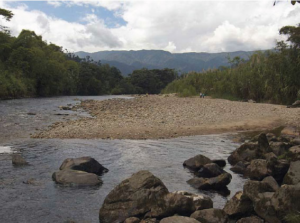In 2021, the high consumption of flowers in the United States positioned this market as the second global importer, concentrating around 21% of the world’s flower imports. According to the stimulus of post-pandemic recovery plans, there was an increase in flower consumption in this market over the past year, driven by monetary transfers and overall economic recovery. Therefore, in 2021, flower imports reached more than USD 2.164 billion, a record figure in the last 11 years, with an increase of USD 629 million compared to 2020, which is equivalent to a 41% increase. In this market, roses account for the largest preference for consumption, with around 43% of total flower imports, which registered a growth of 36% in 2021. The second most consumed species in the US market are summer flowers used for floral arrangements and bouquets, which account for 32% of imports and present an increase of 52%; followed by chrysanthemums with a 12% share and a 33% increase in imports. Other species such as carnations and lilies represent 11% of the total imported. Most flower suppliers to the United States saw an increase in their shipments in 2021. Mexico’s performance is noteworthy, as imports from this country increased by 92% compared to 2020. On the other hand, the dynamism of Colombia’s exports was the lowest among the main suppliers to the United States.

Foto: Ministerio de Producción Comercio Exterior Inversiones y Pesca (s,f)
According to information obtained from TradeMap (origin source USITC), Ecuadorian flower imports in the United States reached USD 508 million in 2021. Based on data from the Central Bank of Ecuador, flower exports to the United States reached USD 399 million, with a difference of approximately USD 109 million between both sources. The country exports between 30,000 boxes of flowers daily, which triples during Valentine’s Day, reaching up to 100,000 boxes per day. Flowers account for 5.3% of Ecuador’s non-oil exports and are the 5th non-oil export product of the country. As of January 2022, the flower sector in Ecuador accounts for 5.3% of the country’s non-oil exports and is the 5th non-oil export product. According to recent reports from Expoflores, based on data from the Central Bank of Ecuador (BCE), the countries that prefer the national product are the United States, the European Union, Russia, and Canada, among other markets.
International demand for Ecuadorian flowers has been growing and showed a post-pandemic recovery. According to the BCE, between November 2020 and November 2021, every month showed an increase in exports. In 2021, according to the report published in January 2022 by Expoflores, there are no months with a decrease in flower exports, with October being the month with the highest increase, surpassing 2020 by 45%. The expectation is high, as 30,000 boxes are exported daily, and during Valentine’s Day, it triples to 100,000 boxes per day.
This national product is a hit abroad. Of the total exports in the second semester of 2021, 4 out of 10 go to the US market, 2 out of 10 to the European Union, and 1 out of 10 to Russia. The North American country is the one that prefers Ecuadorian varieties the most, after those of Colombian origin. Ecuador participates in 22% of the exports that this nation makes every year, thanks to the quality of the product due to a careful planting and cultivation process, with environmental care.

Foto: Ministerio de Producción Comercio Exterior Inversiones y Pesca (s,f)
The success of Ecuadorian flower exports has a close relationship with the fertility of the soils where they grow. To achieve this, the application of key nutrients is necessary to maintain a healthy soil and produce high-quality flowers that can meet the high standards of international markets. Yara, in that sense, has been working on the development of sustainable crop nutrition solutions that allow producers to improve their crop yields, reaching over 17,000 tons of exported flowers per year, and maintain their soils healthy. This even guarantees that the land is enabled year after year to continue producing,” says Jaime Vinces, about the reasons why this product is a star abroad.
This sector generates development. According to reports from CFN (National Financial Corporation), in 2020, 237 companies were registered that dedicated themselves to flower cultivation, of which the majority are located in the province of Pichincha (73%). This sector generated 28,775 jobs, of which 34% corresponded to SMEs.

Foto: El Comercio (2022)




